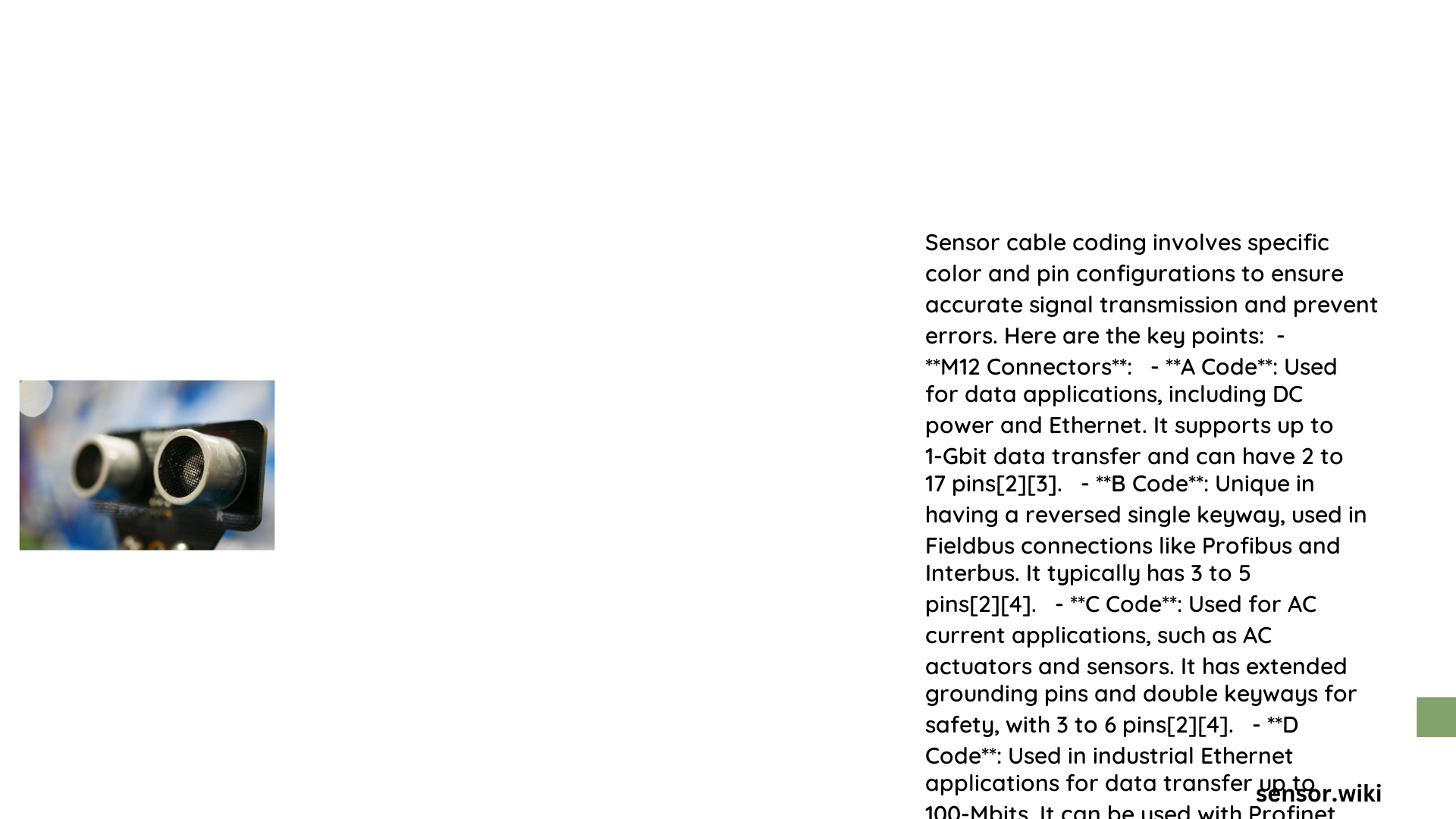Sensor cable coding is a critical aspect of electrical and electronic systems that ensures accurate signal transmission, proper device connectivity, and safety. Understanding the complex color-coding schemes, wire configurations, and signal characteristics is essential for engineers, technicians, and professionals working with various sensor technologies. This comprehensive guide delves into the nuanced world of sensor cable coding, exploring color standards, wiring techniques, and signal transmission methodologies across different sensor types and international standards.
What Are the Fundamental Principles of Sensor Cable Coding?
Sensor cable coding involves standardized methods of identifying and organizing electrical conductors to ensure reliable and accurate signal transmission. These coding systems encompass several key elements:
- Color Identification: Specific colors representing different signal types
- Wire Gauge Selection: Determining appropriate wire thickness
- Insulation Requirements: Protecting signal integrity
- Grounding Techniques: Minimizing electrical interference
How Do Load Cell Wires Get Coded?
Load cell cables typically follow a precise color-coding scheme:
| Wire Color | Signal Type |
|---|---|
| Red | Positive Excitation |
| Black | Negative Excitation |
| Green | Positive Signal Output |
| White | Negative Signal Output |
What Color Standards Exist for Thermocouple Wiring?
Thermocouple wiring varies between ANSI and IEC standards:
ANSI Standards
- Type K: Yellow (positive), Red (negative)
- Type J: White (positive), Red (negative)
- Type N: Orange (positive), Red (negative)
IEC Standards
- Type K: Green (positive), White (negative)
- Type J: Black (positive), White (negative)
Why Is Proper Cable Coding Critical?

Proper sensor cable coding ensures:
1. Accurate signal transmission
2. Reduced electromagnetic interference
3. Enhanced system reliability
4. Simplified troubleshooting
5. Compliance with international safety standards
How Do Signal Types Impact Cable Coding?
Signal types significantly influence cable coding:
Analog Signals
- Continuous voltage variations
- Typically low-voltage ranges
- Require precise shielding techniques
Digital Signals
- Discrete voltage levels
- Higher noise immunity
- Use specific communication protocols
What Factors Influence Cable Selection?
Several critical factors determine appropriate sensor cable coding:
- Environmental Conditions
- Temperature range
- Chemical exposure
-
Mechanical stress
-
Signal Transmission Distance
- Shorter distances: Thinner gauges
-
Longer distances: Thicker, more robust cables
-
Interference Potential
- Shielded vs. unshielded cables
- Grounding requirements
Best Practices for Sensor Cable Coding
- Always verify manufacturer specifications
- Use standardized color codes
- Implement proper shielding techniques
- Regularly inspect cable integrity
- Follow international wiring standards
Conclusion
Sensor cable coding represents a sophisticated system of electrical communication, requiring meticulous attention to detail and comprehensive understanding of signal transmission principles.
